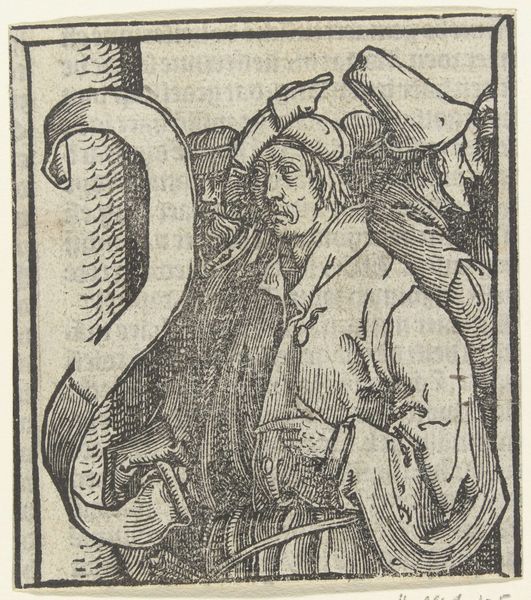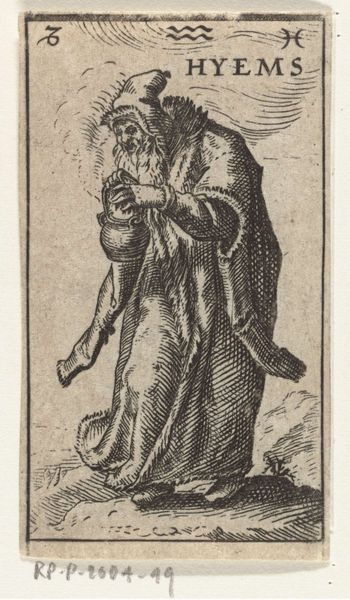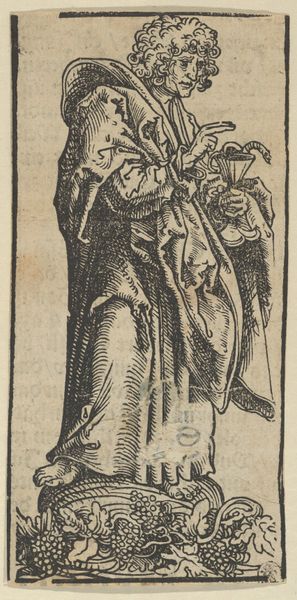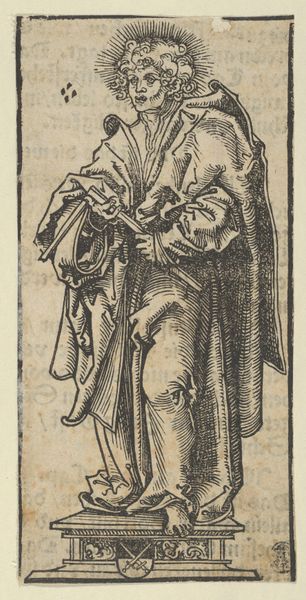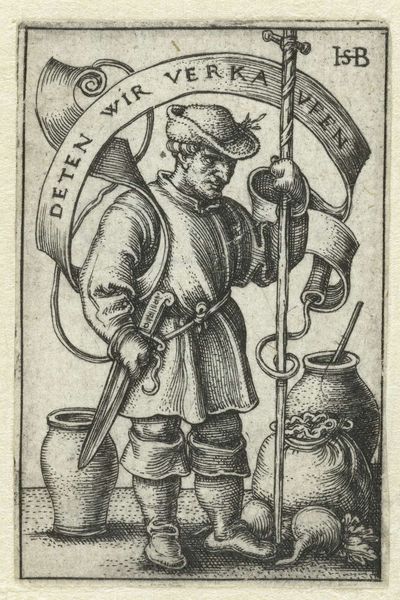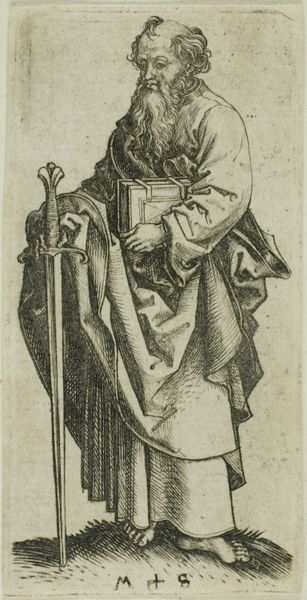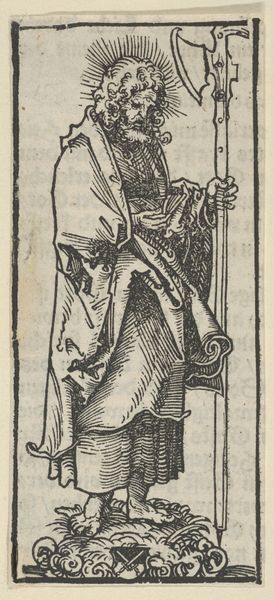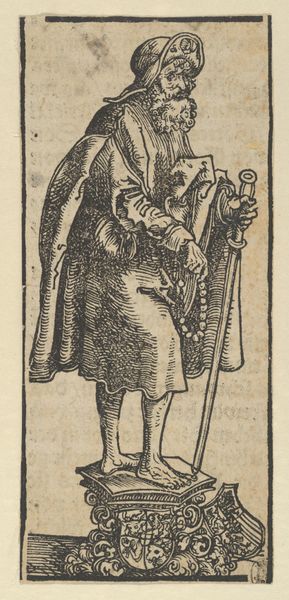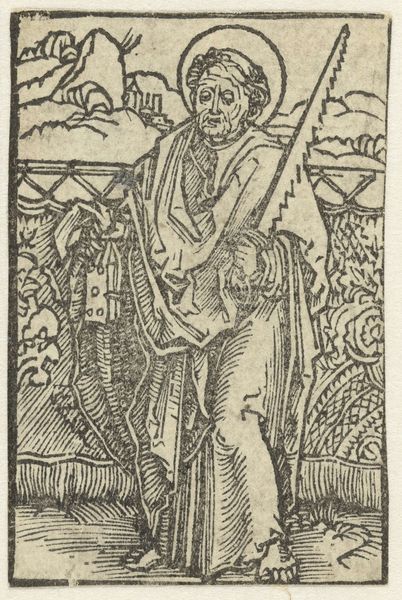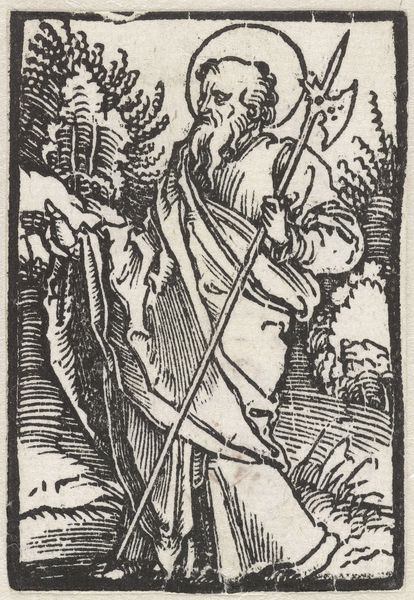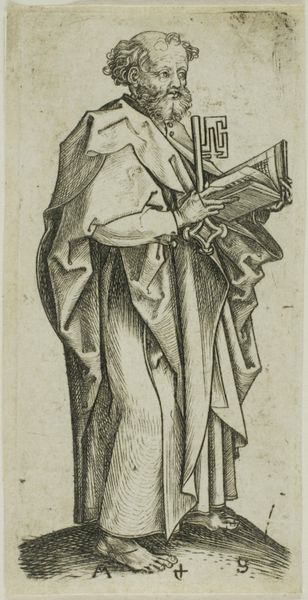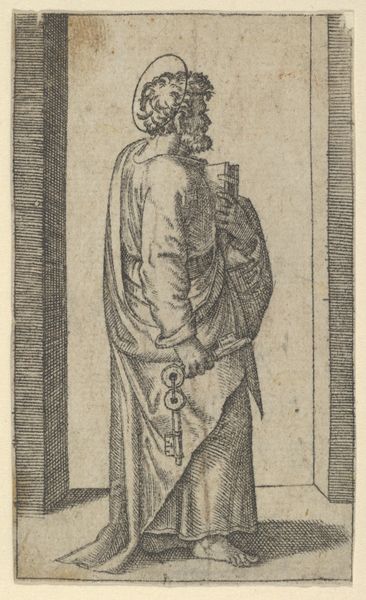
print, engraving
#
portrait
# print
#
figuration
#
line
#
history-painting
#
northern-renaissance
#
engraving
Dimensions: height 94 mm, width 83 mm
Copyright: Rijks Museum: Open Domain
Lucas van Leyden created this woodcut, "Portret van hertog Pepijn van Brabant," around the early 16th century. Dominating the composition is the figure of Duke Pepijn, identified by the inscribed banner, emerging from a crowd. The pointing finger of Pepijn is a compelling gesture, often seen in depictions of authority and guidance. We find echoes of this motif stretching back to classical antiquity, where emperors and philosophers alike employed it to signify direction. It reemerges throughout the Renaissance as an emblem of divine judgment. Think of John the Baptist in Renaissance paintings—his pointing finger compels viewers to recognize the path to salvation. The persistence of such symbols speaks to a deep-seated human need for leadership and direction, and the enduring power of visual language to convey complex ideas across generations. These symbols remind us of our shared cultural memory, a web of interconnected meanings that bind us to the past.
Comments
No comments
Be the first to comment and join the conversation on the ultimate creative platform.
